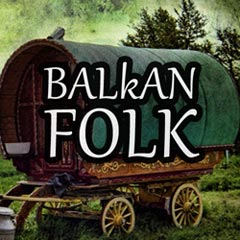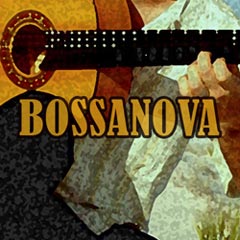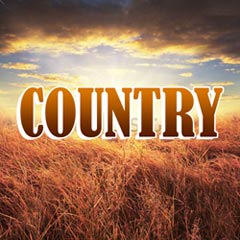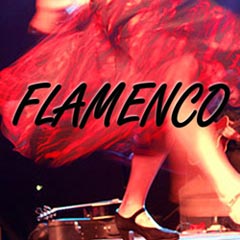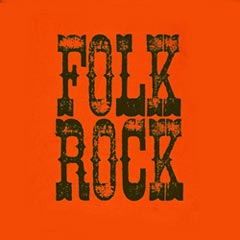Bossa nova
ON AIR - PROGRAMMING
Brazilian pride in the background adds carioca and samba flair to jazz, adding sweet content, sometimes becoming explicitly political. If you're looking to experience a musical journey like no other, then Bossa noval Brazilian genre may just be the right fit. This rhythmic tune first sprouted roots in the late 1950s in Rio de Janeiro, giving listeners an energizing blend of jazz and tropical beats. Its namesake project draws significant influence from samba and American jazz, truly helping define the distinctive bossa noval sound. To hear them both side by side is a one of a kind joyful serenade that solidifies worry free living! So why not take a minute to delve into this incredible sound and really have a wonderful time? After all, your downtime deserves the best tunes! Bossa nova is a Brazilian music genre, very popular in the 1950s and 1960s. The term means new trend, and it fuses samba and jazz with Brazilian Portuguese vocals and lyrics.
Exploring the Heavenly Sounds of Bossa Nova
If there's one genre that can always lift your mood and transport you straight to the palm-lined beaches of Brazil, it's Bossa Nova. This unique blend of samba and jazz with Portuguese vocals has captivated listeners for decades and earned a special place in the hearts of music lovers worldwide. So, what makes this genre so special, and why should you give it a listen? Today, let's explore the heavenly sounds of Bossa Nova, shall we?
Let's start with a brief history of Bossa Nova. This genre emerged amidst the cultural and musical revolution of the late 1950s in Rio de Janeiro. It was a time where samba, the traditional Brazilian music style, was changing and developing into something new. Bossa Nova was born out of this evolution, fusing samba with jazz themes and singing styles. The result was a hypnotic, laid-back sound that soon caught on around the world.
Bossa Nova tunes often have a mellow and breezy feel to them, but they can also be intricately complex and musically rich. The songs usually feature guitar, percussion, and light, airy vocals, often in Brazilian Portuguese, but sometimes in English or other languages. This blend of sounds results in a beautifully unique and relaxing listening experience that can transport you to a tropical paradise within seconds.
Another interesting aspect of Bossa Nova is its versatility. While it remains primarily associated with jazz, samba, and Brazilian culture, artists have expanded the genre's boundaries over the years. Some Bossa Nova musicians have experimented with other styles such as rock, funk, and electronic music, leading to exciting new sounds and interpretations of the traditional Bossa Nova style.
Additionally, Bossa Nova has also been known to dip into political commentary from time to time. Many of the genre's most iconic songs contain lyrics that reflect the social and political issues of Brazil at the time of their creation. For example, Garota de Ipanema by Antonio Carlos Jobim and Vinicius de Moraes is an ode to a beautiful girl living in Rio de Janeiro and the beauty of the city, while also containing commentary on social justice issues that plagued Brazil in the 1950s.
In conclusion, if you're looking for an exceptional musical journey that can transport you to a land of sun, sea, and sand, look no further than Bossa Nova. It's a unique and versatile musical style that continues to influence and inspire musicians worldwide even today. So, take a moment to explore this amazing sound and let yourself unwind and relax in its sweet, soothing rhythms. Trust us; your downtime deserves nothing but the best!
Exploring the Heavenly Sounds of Bossa Nova
If there's one genre that can always lift your mood and transport you straight to the palm-lined beaches of Brazil, it's Bossa Nova. This unique blend of samba and jazz with Portuguese vocals has captivated listeners for decades and earned a special place in the hearts of music lovers worldwide. So, what makes this genre so special, and why should you give it a listen? Today, let's explore the heavenly sounds of Bossa Nova, shall we?
Let's start with a brief history of Bossa Nova. This genre emerged amidst the cultural and musical revolution of the late 1950s in Rio de Janeiro. It was a time where samba, the traditional Brazilian music style, was changing and developing into something new. Bossa Nova was born out of this evolution, fusing samba with jazz themes and singing styles. The result was a hypnotic, laid-back sound that soon caught on around the world.
Bossa Nova tunes often have a mellow and breezy feel to them, but they can also be intricately complex and musically rich. The songs usually feature guitar, percussion, and light, airy vocals, often in Brazilian Portuguese, but sometimes in English or other languages. This blend of sounds results in a beautifully unique and relaxing listening experience that can transport you to a tropical paradise within seconds.
Another interesting aspect of Bossa Nova is its versatility. While it remains primarily associated with jazz, samba, and Brazilian culture, artists have expanded the genre's boundaries over the years. Some Bossa Nova musicians have experimented with other styles such as rock, funk, and electronic music, leading to exciting new sounds and interpretations of the traditional Bossa Nova style.
Additionally, Bossa Nova has also been known to dip into political commentary from time to time. Many of the genre's most iconic songs contain lyrics that reflect the social and political issues of Brazil at the time of their creation. For example, Garota de Ipanema by Antonio Carlos Jobim and Vinicius de Moraes is an ode to a beautiful girl living in Rio de Janeiro and the beauty of the city, while also containing commentary on social justice issues that plagued Brazil in the 1950s.
In conclusion, if you're looking for an exceptional musical journey that can transport you to a land of sun, sea, and sand, look no further than Bossa Nova. It's a unique and versatile musical style that continues to influence and inspire musicians worldwide even today. So, take a moment to explore this amazing sound and let yourself unwind and relax in its sweet, soothing rhythms. Trust us; your downtime deserves nothing but the best!
2023-05-09
The brasilian jazz: bossanova!
Jazzy, but not Jazz, maybe this is how I firstly depict my impression of bossa nova music, and perhaps the other people don’t even recognize it. In fact, maybe many people will get confused and also define the bossa nova songs as jazz because they have quite a substantial similarity. But do you know that the bossa nova is actually hybrid music? Bossa nova, combining Brazilian samba music style with Jazz, creating idiosyncratic yet sophisticated music that has a slower, calm ambiance with the jazzy improvisations of the instruments compared to its predecessors. Although Bossa nova has become a worldwide well-known music right now, the first history of Bossa nova comes from one of the developed countries in the America continent called Brazil. This term is coined during the 1950s, as the bossa nova in Portuguese words means ‘new wave.’ This ‘new wave’ music gained a large amount of popularity among the younger generations, and only within a few years, bossa nova becomes the center of attention among the Jazz musicians in the United States.
Bossa nova music employs the rhythm based on Samba music as its core. The accentuation of the second beat in samba music is also used in bossa nova. Due to this reason, usually, bossa nova has the 2/4-time signature. Bossa nova music employs the classical guitar as the melody and rhythm while also uses the drum and some Brazilian percussion such as clave, mambo, and cabasa. This rhythm and instruments create a swaying feeling to the listener, which differs from swinging in jazz. Often, the piano is also used for bossa nova music. Usually, the lyrics of bossa nova depicts the happy life of an upper-class citizen in Brazil, and also about love and longing. Too, the singing style of bossa nova usually calm and subdue.
Bossa nova’s first and influential musician is Joao Gilberto. His first bossa nova’s music entitled Chega de Saudade to become a hit in Brazil, and also become my personal recommendation to someone who wants to know bossa nova music. His calm voice and the unique guitar playing are contrasted with the classical samba songs and hence, creating a new wave of music in Brazil which followed by the other musicians. One of another prominent bossa nova musicians and maybe The Father of Bossa Nova falls to Antonio Carlos Jobim. The Girl from Ipanema become one of the best and famous works of Antonio Carlos Jobim and even won the Grammy Award for Record of the Year in 1965! Try to listen to Desafinado, Corcovado, and A Felicidade for more Antonio Carlos Jobim works. With the booming of bossa nova, many American musicians also interested in bossa nova. From many musicians, Stan Getz and Charlie Byrd maybe are one of the pioneers to popularize bossa nova in the United States. With their album entitled Jazz Samba, they dominate the Billboard chart for pop albums in 1962; it even becomes the number 1 in the chart list. In this album, try to listen to Samba Dees Days and Samba Triste, or basically just listen to all of the music in this album. Hence, all of these songs will roughly give you the big picture of the bossa nova music.
Bossa nova music employs the rhythm based on Samba music as its core. The accentuation of the second beat in samba music is also used in bossa nova. Due to this reason, usually, bossa nova has the 2/4-time signature. Bossa nova music employs the classical guitar as the melody and rhythm while also uses the drum and some Brazilian percussion such as clave, mambo, and cabasa. This rhythm and instruments create a swaying feeling to the listener, which differs from swinging in jazz. Often, the piano is also used for bossa nova music. Usually, the lyrics of bossa nova depicts the happy life of an upper-class citizen in Brazil, and also about love and longing. Too, the singing style of bossa nova usually calm and subdue.
Bossa nova’s first and influential musician is Joao Gilberto. His first bossa nova’s music entitled Chega de Saudade to become a hit in Brazil, and also become my personal recommendation to someone who wants to know bossa nova music. His calm voice and the unique guitar playing are contrasted with the classical samba songs and hence, creating a new wave of music in Brazil which followed by the other musicians. One of another prominent bossa nova musicians and maybe The Father of Bossa Nova falls to Antonio Carlos Jobim. The Girl from Ipanema become one of the best and famous works of Antonio Carlos Jobim and even won the Grammy Award for Record of the Year in 1965! Try to listen to Desafinado, Corcovado, and A Felicidade for more Antonio Carlos Jobim works. With the booming of bossa nova, many American musicians also interested in bossa nova. From many musicians, Stan Getz and Charlie Byrd maybe are one of the pioneers to popularize bossa nova in the United States. With their album entitled Jazz Samba, they dominate the Billboard chart for pop albums in 1962; it even becomes the number 1 in the chart list. In this album, try to listen to Samba Dees Days and Samba Triste, or basically just listen to all of the music in this album. Hence, all of these songs will roughly give you the big picture of the bossa nova music.
Tag: bossanova, bossa nova, joao gilberto, brasil
What are you thinking about?

